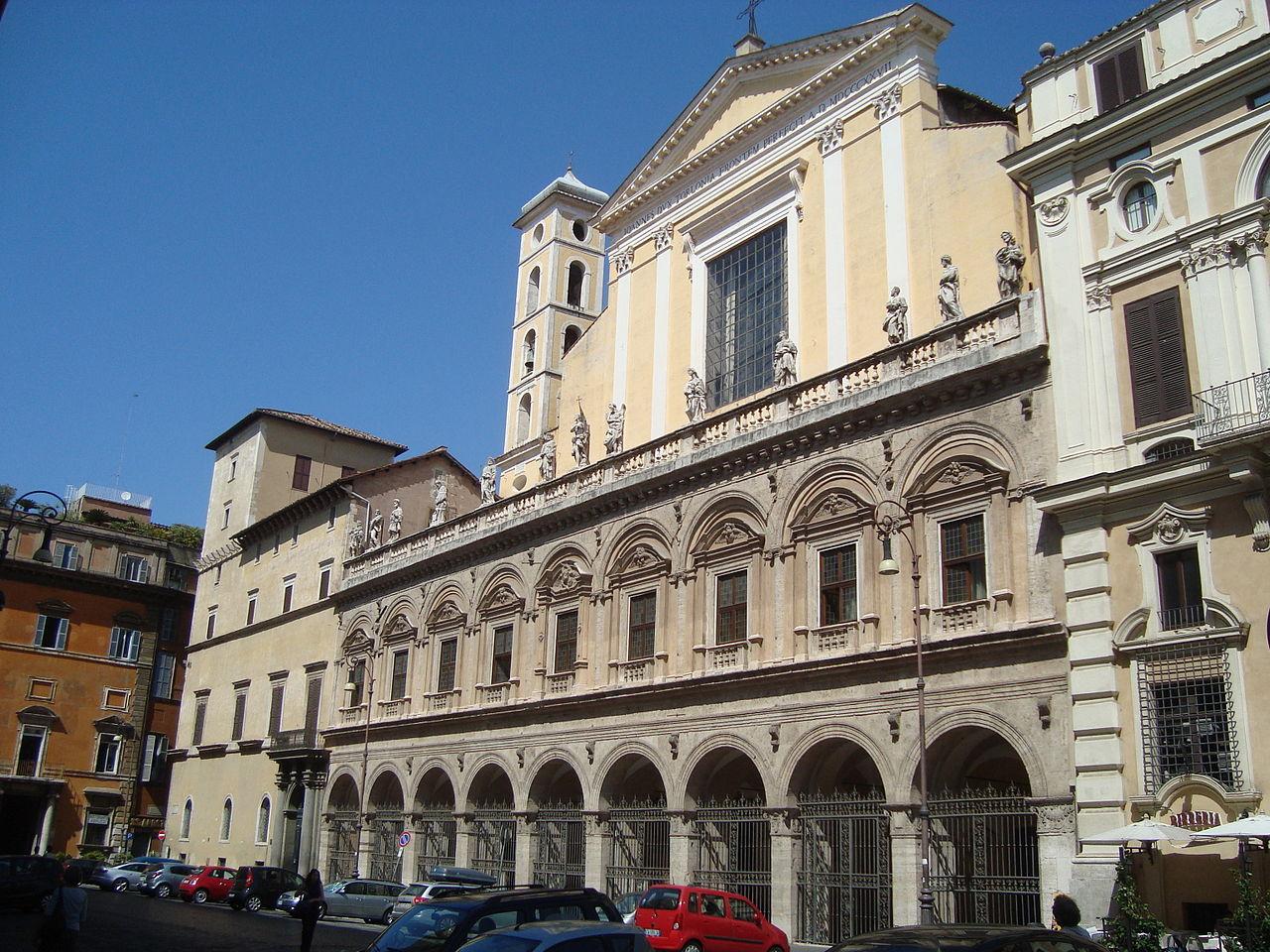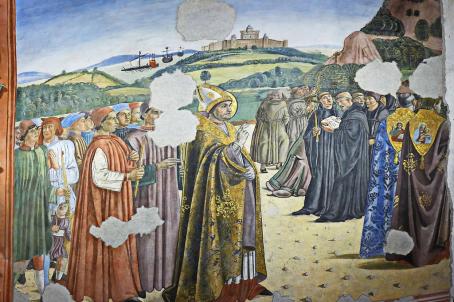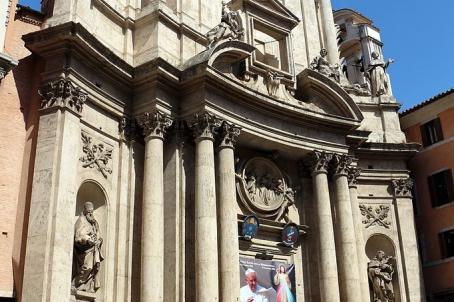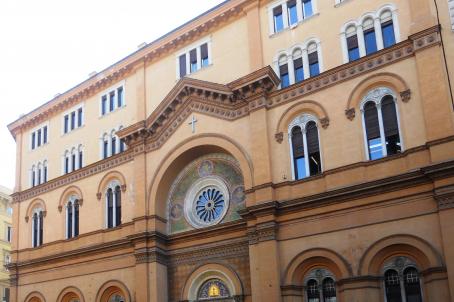Basilica dei Santi XII Apostoli

The Basilica of the Holy Apostles was first built in the 4th century by Pope Julius I (337-352). The present church, however, was built from the 14th century onwards, as the old Basilica of the Holy Apostles was destroyed by an earthquake in 1348 and abandoned. The façade was built at the end of the 15th century by Baccio Pontelli. The frescoes were painted by Melozzo of Forlì, whose murals of the Holy Apostles are renowned for their innovative perspective techniques and are considered his masterpiece. Today, the basilica is under the responsibility of the Franciscan conventual order, whose headquarters are in Rome in an adjacent building.





